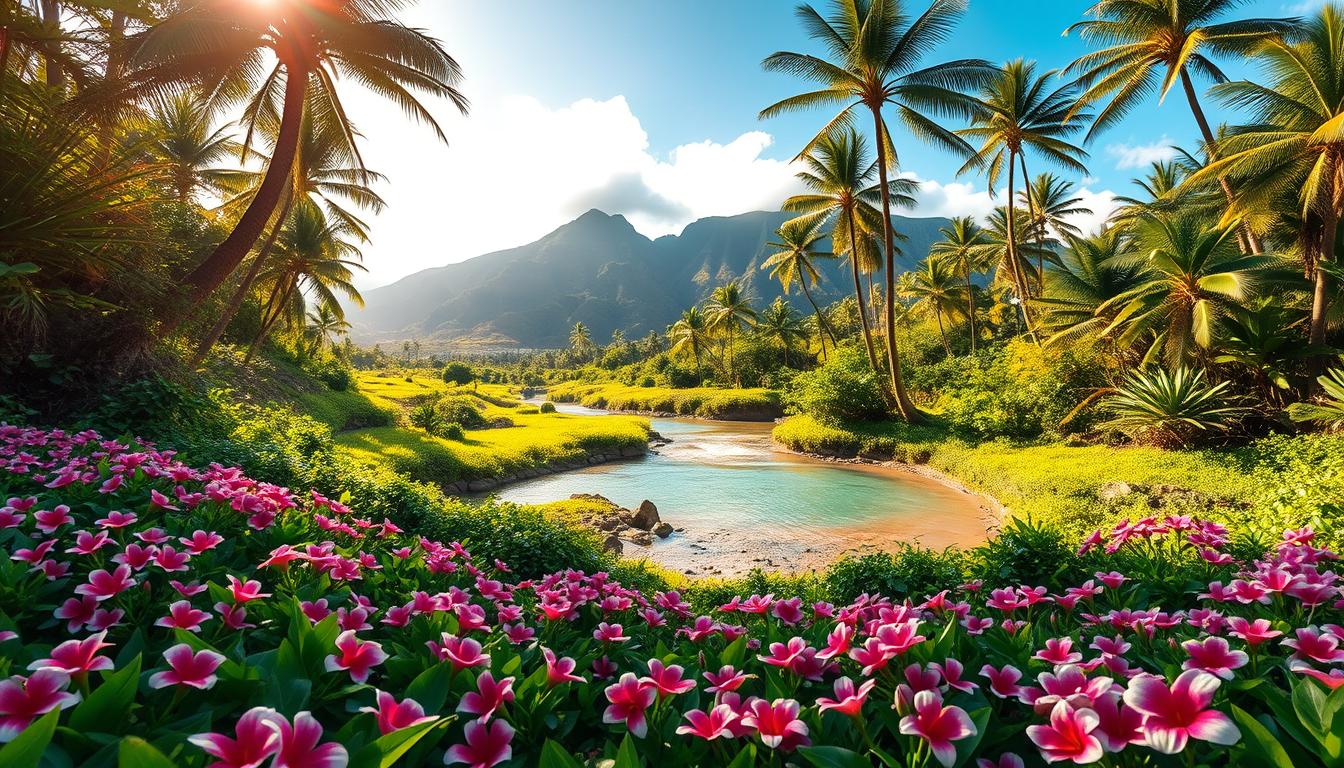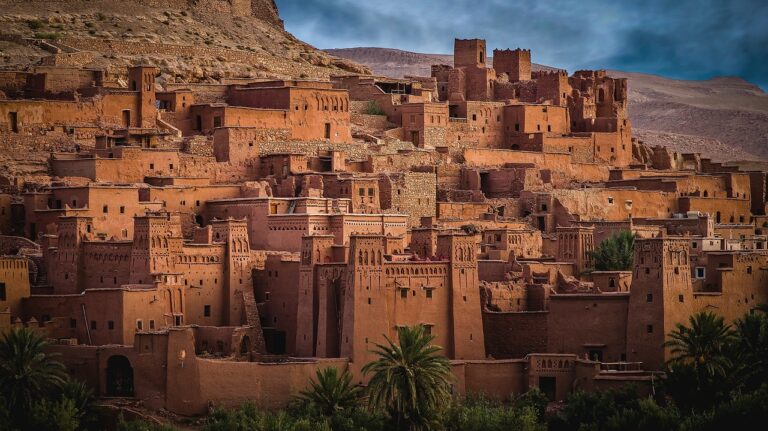Planning a trip to Hawaii can be a daunting task, especially when it comes to deciding when to go. With its unique climate and diverse landscapes, Hawaii offers a tropical getaway that’s hard to resist. However, the best time to visit Hawaii depends on various factors, including weather, tourist season, and personal preferences.
Table of Contents
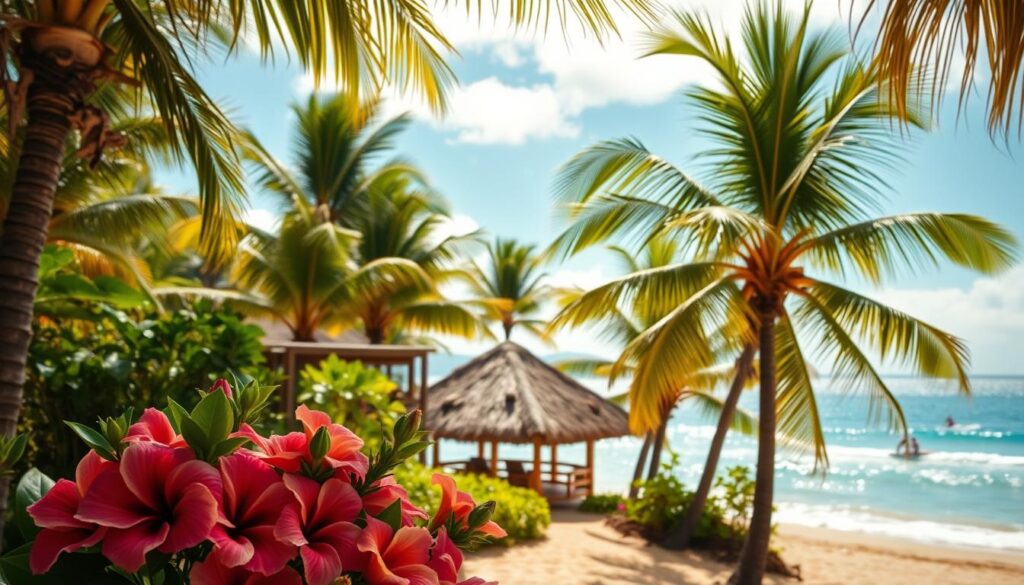
Understanding the local climate and the factors that influence it can help you make the most of your trip. Whether you’re looking for a relaxing beach vacation or an adventure-filled getaway, timing your visit to Hawaii correctly can make all the difference.
Key Takeaways
- Understand Hawaii’s unique climate and weather patterns
- Learn about the factors that influence the best time to visit
- Discover the ideal time for your preferred activities
- Get tips on how to make the most of your Hawaii vacation
- Plan your trip according to the tourist season
Understanding Hawaii’s Climate and Seasons
The Hawaiian islands boast a tropical climate with two main seasons, which play a significant role in determining the best time to visit. This unique climate is characterized by relatively stable temperatures throughout the year, with seasonal variations that are more subtle than those experienced in temperate zones.
Hawaii’s Unique Tropical Climate
Hawaii’s tropical climate is influenced by its geographical location near the equator. The islands experience a relatively consistent temperature range, with average highs rarely exceeding 85°F (30°C) and lows seldom below 70°F (21°C). This stable temperature regime is a hallmark of Hawaii’s tropical climate, making it an attractive destination for tourists seeking warm weather year-round.
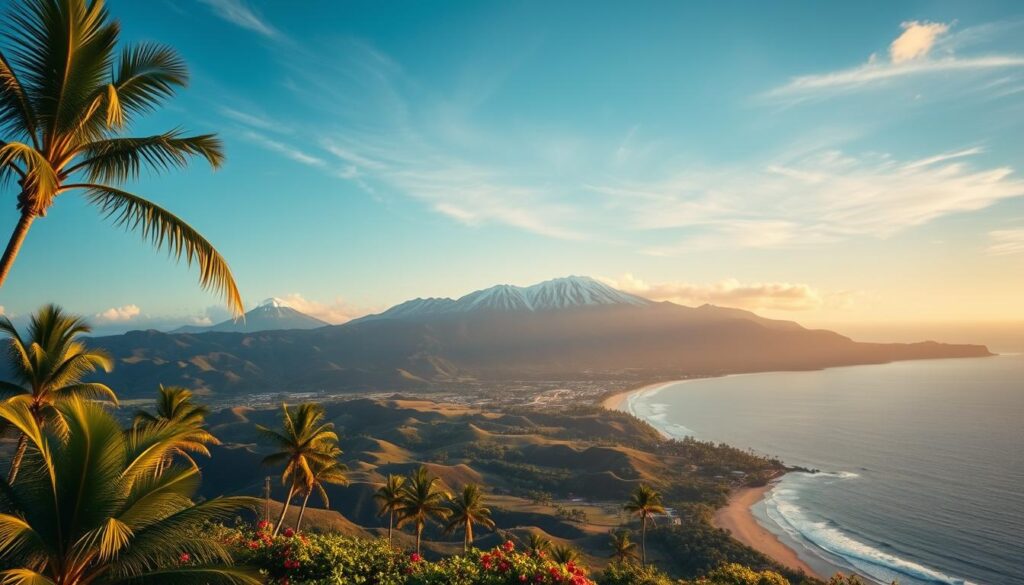
The Two Main Seasons: Dry and Wet
Hawaii’s climate is characterized by two distinct seasons: a dry season, known as “summer,” and a wet season, referred to as “winter.” The dry season typically runs from May to October, with the most pronounced dryness usually occurring in June, July, and August. Conversely, the wet season spans from November to March, with the most significant rainfall often happening in December, January, and February.
Temperature Variations Throughout the Year
While Hawaii’s temperature remains relatively stable, there are slight variations throughout the year. During the dry season, temperatures tend to be warmer, especially in the afternoons. In contrast, the wet season brings slightly cooler temperatures, particularly in the mornings and evenings. Understanding these temperature fluctuations can help visitors pack appropriately and make the most of their trip.
In summary, Hawaii’s tropical climate, with its two main seasons, offers a unique and pleasant weather experience. By understanding the characteristics of these seasons, travelers can better plan their visits to enjoy the islands’ natural beauty and outdoor activities to the fullest.
The Best Time to Visit Hawaii: Season by Season Overview
Understanding the seasonal variations in Hawaii is key to planning your trip. Hawaii’s climate is characterized by two main seasons: dry and wet, with temperature variations throughout the year. Each season offers unique experiences and activities that cater to different preferences.
Winter (December-February): Whale Watching and Surfing
Winter is a fantastic time for whale watching in Hawaii, as humpback whales migrate to the islands’ waters. It’s also a great season for surfers, with big waves on the north shores of the islands. If you’re not into extreme sports, winter can still be a good time to visit, with fewer tourists than in the summer months.
- Witness humpback whales in their natural habitat
- Enjoy surfing or bodyboarding on Hawaii’s famous waves
- Experience Hawaii’s festivals and events, like the Honolulu Festival
Spring (March-May): Ideal Weather and Fewer Crowds
Spring is considered one of the best times to visit Hawaii, with pleasant weather and fewer crowds than the peak summer months. It’s an ideal period for outdoor activities like hiking and snorkeling, as the ocean is generally calm and clear.
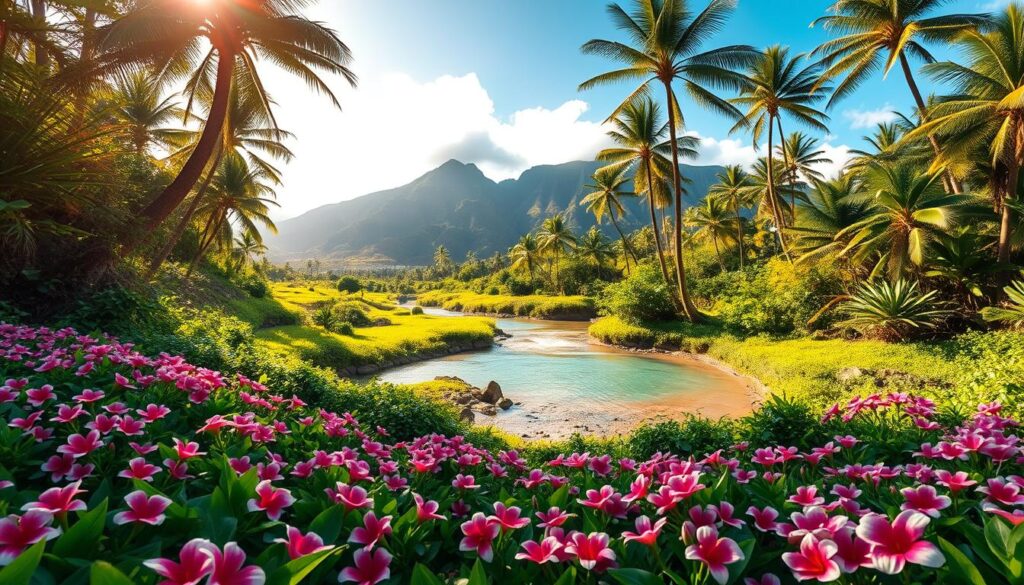
Summer (June-August): Peak Season and Family Travel
Summer is the peak tourist season in Hawaii, with schools on summer break and families on vacation. It’s the perfect time for beach activities, surfing, and enjoying the islands’ many outdoor events and festivals. However, expect larger crowds and higher prices for accommodations and activities.
- Enjoy the long days and warm weather
- Participate in summer festivals and events
- Take advantage of family-friendly activities and attractions
Fall (September-November): The Sweet Spot for Travelers
Fall is another great time to visit Hawaii, offering a mix of the benefits of spring: comfortable temperatures and fewer tourists. It’s a good season for outdoor activities and enjoying the cultural events that take place during this time. The weather is generally pleasant, making it ideal for exploring the islands.
By understanding what each season offers, you can plan your trip to Hawaii according to your preferences, whether you’re looking for adventure, relaxation, or cultural experiences.
Weather Patterns Across the Hawaiian Islands
Each Hawaiian island has its own distinct weather profile, shaped by factors like trade winds and topography. This diversity in weather patterns significantly influences the activities and experiences available to visitors across the islands.
Oahu: The Gathering Place
Oahu, home to Honolulu, experiences a relatively consistent tropical climate. However, the island’s weather can vary from the sunny beaches to the cooler, more temperate climates of the mountainous regions.
Weather Highlights: Sunny weather year-round on the beaches, cooler temperatures in the mountains.
Maui: The Valley Isle
Maui is known for its varied landscapes, from volcanic peaks to lush valleys. The island’s weather reflects this diversity, with the Haleakala summit experiencing significantly cooler temperatures than the coastal areas.
Weather Variations: Cooler at the summit, warm and sunny on the beaches.
Big Island: Diverse Microclimates
The Big Island boasts a range of microclimates due to its size and varied topography. From the tropical climates of Hilo to the drier conditions of Kona, the weather varies significantly across the island.
| Region | Climate | Popular Activities |
|---|---|---|
| Hilo | Tropical, rainy | Rainforest exploration |
| Kona | Dry, sunny | Snorkeling, coffee farm tours |
| Mauna Kea | Cold, snowy | Skiing, stargazing |
Kauai: The Garden Isle
Kauai is characterized by its lush, green landscapes, largely due to its high rainfall. The island’s weather is generally wetter than the other islands, making it ideal for nature lovers.
Nature and Weather: Lush landscapes due to high rainfall.
Molokai and Lanai: Less Visited Gems
Molokai and Lanai offer more secluded experiences, with weather patterns that are less influenced by tourism. Molokai retains a rustic charm, while Lanai is known for its luxury resorts and golf courses.
The diverse weather patterns across the Hawaiian Islands offer a range of experiences for visitors. Understanding these patterns can help travelers choose the best times and places to visit based on their preferences.
Peak vs. Off-Peak: Navigating Hawaii’s Tourist Seasons
Understanding the nuances of Hawaii’s tourist seasons can significantly enhance your island experience. Hawaii, known for its beautiful landscapes and rich culture, attracts visitors throughout the year, but the time you choose to visit can greatly impact your trip.
High Season: When Most Tourists Visit
The high season in Hawaii, typically from mid-December to mid-April, is characterized by large crowds and higher prices for accommodations and activities. This period is ideal for families and those who don’t mind the crowds, as it coincides with winter breaks and holidays.
Shoulder Season: The Perfect Balance
Research indicates that the shoulder season, which includes the periods from April to June and September to mid-December, offers a good balance between pleasant weather and manageable crowd sizes. It’s an excellent time for those looking for a more relaxed experience without the peak season prices.
Low Season: Benefits and Considerations
The low season, usually from mid-April to June and September to mid-December, brings fewer tourists and lower prices. However, it’s essential to consider that some attractions and activities might operate on reduced schedules.
Avoiding Crowds at Popular Attractions
To make the most of your visit, consider exploring popular attractions early in the morning or later in the evening to avoid the crowds.
“The best time to visit Hawaii is during the shoulder season when the weather is pleasant, and the crowds are smaller,”
Budget Considerations for Different Travel Periods
Planning a trip to Hawaii requires careful budgeting, as costs can fluctuate significantly depending on the time of year you visit. Understanding these fluctuations can help you plan a more affordable and enjoyable trip.
Accommodation Costs Throughout the Year
Accommodation prices in Hawaii vary significantly with the seasons. During peak season (summer and holidays), hotels and resorts tend to be fully booked, and prices are at their highest. In contrast, during the shoulder season (April-May and September-November), you can find more competitive rates and better availability.
Tips for Saving on Accommodations:
- Book in advance to secure lower rates.
- Consider staying in vacation rentals or budget hotels.
- Look for package deals that include accommodations and activities.
Flight Price Fluctuations
Flight prices to Hawaii can also vary greatly depending on the time of year and demand. Peak travel seasons, such as summer and winter holidays, see the highest airfare prices. If you’re flexible with your travel dates, you can find cheaper flights during the off-peak seasons.
Use flight comparison tools to find the best deals, and consider flying into alternative airports if you have multiple options.
Activity and Tour Pricing Seasons
The cost of activities and tours in Hawaii can also fluctuate with the seasons. Popular activities like snorkeling, surfing, and helicopter tours tend to be more expensive during peak season due to higher demand.
Money-Saving Tips for Any Season
Regardless of when you visit, there are several ways to save money on activities and tours:
- Book activities in advance to secure lower prices.
- Look for bundled deals or packages that include multiple activities.
- Consider visiting popular attractions early in the morning or later in the evening to avoid peak tourist hours.
All-Inclusive vs. À La Carte Travel Options
When planning your trip, you may wonder whether an all-inclusive package or à la carte travel options are more cost-effective. All-inclusive resorts can offer convenience and potentially save you money if you plan to participate in many activities. However, à la carte options allow you to customize your trip according to your preferences and budget.
By understanding the budget considerations for different travel periods and making informed decisions, you can enjoy a memorable and affordable Hawaiian vacation.
Best Times for Specific Activities in Hawaii
With its tropical climate, Hawaii is a year-round destination, but certain activities are best enjoyed during specific times. Understanding these optimal periods can significantly enhance your Hawaiian experience, whether you’re interested in water sports, exploring the outdoors, or immersing yourself in local culture.
Surfing: Catching the Perfect Wave
Hawaii is renowned for its world-class surfing. The best time for surfing depends on your skill level and the island you’re visiting. Generally, the winter months (November to February) offer the biggest waves, particularly on the north shores of Oahu, Maui, and Kauai, making it ideal for experienced surfers. In contrast, the summer months (June to August) provide calmer conditions, suitable for beginners.
Snorkeling and Diving: Underwater Visibility
The best time for snorkeling and diving in Hawaii is during the summer months when the ocean is generally calmer and visibility is better. The water temperature remains warm throughout the year, ranging from 72°F to 82°F (22°C to 28°C), making it comfortable for underwater exploration year-round. However, for specific marine life encounters, such as manta rays or sea turtles, certain times of the year are more favorable.
Hiking: Ideal Conditions for Trails
Hawaii’s hiking trails are accessible year-round, but the best conditions vary by island and elevation. Generally, spring (April to May) and fall (September to November) offer pleasant temperatures and fewer crowds, making these periods ideal for hiking. It’s essential to check weather forecasts and trail conditions before heading out, as Hawaii’s weather can be unpredictable.
Cultural Festivals and Events
Hawaii’s cultural calendar is rich with festivals and events. Some notable ones include:
- The Honolulu Festival (March), showcasing a blend of Hawaiian and international cultures.
- The Merrie Monarch Festival (April), celebrating Hawaiian music, dance, and art.
- The Hawaii Food and Wine Festival (October), featuring local cuisine and culinary talents.
Wildlife Viewing Opportunities
Hawaii is a haven for wildlife enthusiasts. The best times for viewing specific species vary:
| Species | Best Viewing Time |
|---|---|
| Humpback Whales | December to May |
| Sea Turtles | Year-round, but nesting season peaks in summer |
| Monk Seals | Year-round |
Understanding these timings can help you plan your trip to coincide with the activities and experiences that interest you most.
Weather Considerations and What to Pack
The key to a comfortable and enjoyable trip to Hawaii lies in understanding its weather patterns and packing wisely. Hawaii’s climate varies significantly across its islands and seasons, making it essential to be prepared.
Rainy Season Essentials
During Hawaii’s rainy season, which typically runs from November to March, it’s wise to pack items that will keep you dry and comfortable. Consider bringing:
- Lightweight rain jacket or poncho
- Waterproof shoes or sandals
- Quick-drying clothing
Dry Season Must-Haves
In contrast, the dry season (April to October) calls for different essentials. Don’t forget to pack:
- Sunscreen with high SPF
- Sunglasses
- Light, breathable clothing
Regardless of the season, there are certain items that are always a good idea to bring along. These include:
- Insect repellent
- Power adapter for charging electronic devices
- Reusable water bottle
Special Considerations for Different Activities
If you plan on engaging in specific activities, you’ll need to pack accordingly. For example:
| Activity | Recommended Items |
|---|---|
| Snorkeling | Snorkeling gear, rash guard |
| Hiking | Sturdy hiking boots, water bottle |
| Surfing | Wetsuit, surfboard wax |
Dealing with Unexpected Weather Changes
As surfers and locals alike know, Hawaii’s weather can be unpredictable. Always be prepared for sudden rain showers or changes in temperature by carrying a light layer or waterproof gear.
“The islands’ microclimates mean that weather can vary significantly from one island to another, so it’s crucial to check forecasts regularly before heading out.” – Local Guide
By understanding Hawaii’s weather seasons and packing smartly, you’ll be well on your way to enjoying a stress-free and memorable vacation in paradise.
Island-Specific Recommendations for Timing Your Visit
Hawaii’s islands, though geographically close, each have unique characteristics that influence the best time to visit. Understanding these differences is key to planning an unforgettable trip.
When to Visit Oahu
Oahu, home to Honolulu and historic Pearl Harbor, is a year-round destination. However, the best time to visit Oahu is from mid-April to mid-June and between September and mid-December, when the weather is pleasant and crowds are smaller.
Best Times for Maui
Maui offers a range of experiences, from watching the sunrise from Haleakala to snorkeling in Molokini. The ideal time to visit Maui is during the shoulder season (April-May and September-November), when you can enjoy pleasant weather and fewer crowds.
Ideal Seasons for the Big Island
The Big Island boasts diverse landscapes, from black sand beaches to active volcanoes. Visit during the dry season (April-October) for optimal weather conditions. This period is perfect for exploring Hawaii Volcanoes National Park and enjoying sunny days at Hapuna Beach.
Perfect Timing for Kauai
Kauai, known as the Garden Isle, is ideal to visit during the spring (April-May) and fall (September-November). These periods offer pleasant temperatures and fewer tourists, making it perfect for hiking the Kalalau Trail or exploring Waimea Canyon.
Molokai and Lanai Timing Tips
Molokai and Lanai, the less visited islands, offer a serene experience. For Molokai, the best time is during the dry season (May-October), while Lanai is pleasant year-round, with a peak season from December to April. Both islands are ideal for those seeking tranquility and a chance to experience rural Hawaii.
Using these island-specific recommendations, you can tailor your Hawaii trip planner to include the best times to visit each island, ensuring a well-rounded and memorable Hawaiian getaway.
Conclusion: Planning Your Perfect Hawaiian Getaway
With its unique tropical climate and diverse landscapes, Hawaii offers a vacation experience like no other. By understanding the best time to visit Hawaii, you can tailor your trip to suit your preferences and make the most of your Hawaiian adventure.
Whether you’re looking for ideal weather, exciting outdoor activities, or a budget-friendly trip, this guide has provided you with the essential information to plan your dream vacation. Consider the factors discussed, from weather patterns across the islands to the best times for specific activities, and start planning your Hawaii vacation guide today.
With the right timing, you can enjoy a stress-free and enjoyable trip to the Aloha State. So, pack your bags, grab your sunscreen, and get ready to experience the beauty and magic of Hawaii at its best.
FAQ
What is the best time to visit Hawaii?
The best time to visit Hawaii depends on your preferences, but generally, spring (March-May) and fall (September-November) are considered ideal due to pleasant weather and fewer crowds.
What are the main seasons in Hawaii?
Hawaii has two main seasons: a dry season (summer) and a wet season (winter). The dry season typically runs from June to October, while the wet season is from November to March.
Is Hawaii crowded during peak season?
Yes, Hawaii can be quite crowded during peak season, which is typically summer (June-August) and holidays like Christmas and New Year’s. If you prefer fewer crowds, consider visiting during the shoulder season.
What are the best activities to do in Hawaii during the winter?
Winter is an excellent time for whale watching, surfing, and enjoying the islands’ cultural festivals. You can also explore Hawaii’s beautiful landscapes and outdoor activities like hiking and snorkeling.
How do I avoid crowds at popular attractions in Hawaii?
To avoid crowds, consider visiting popular attractions early in the morning or later in the evening. You can also plan your trip during the shoulder season (April-May or September-November) when crowds are smaller.
What should I pack for a trip to Hawaii?
Packing for Hawaii depends on the time of year you visit. For dry seasons, bring lightweight clothing, sunscreen, and a hat. For wet seasons, include rain gear and waterproof clothing. Comfortable shoes are a must for outdoor activities.
Are there any specific weather considerations for different islands in Hawaii?
Yes, each island has its unique weather patterns. For example, the Big Island has diverse microclimates, while Kauai is known for being the wettest island. Understanding these differences can help you prepare for your trip.
Can I save money by visiting Hawaii during the off-season?
Yes, visiting Hawaii during the off-season (usually mid-April to mid-June and September to mid-December) can result in lower accommodation costs and fewer crowds, making it a more budget-friendly option.
What are the top attractions in Hawaii?
Some of the top attractions in Hawaii include Hawaii Volcanoes National Park, Princeville Resort on Kauai, Haleakala National Park on Maui, Waikiki Beach on Oahu, and the scenic Road to Hana on Maui.
How do I plan a trip to Hawaii?
To plan a trip to Hawaii, start by deciding on the best time to visit based on your preferences. Then, research the top attractions and activities on the islands you want to visit. Book your accommodations and flights in advance, especially during peak season, to ensure availability and the best rates.

